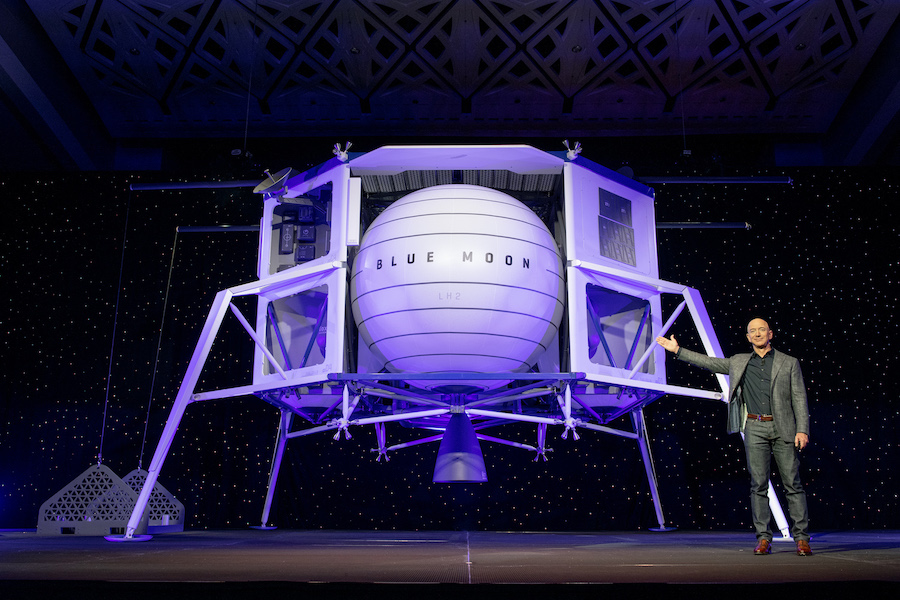Blue Origin will lead a four-company team to build NASA’s lunar lander

Jeff Bezos, CEO and founder of Blue Origin, announced today that his company is teaming up with three other major aerospace firms to design and develop a lunar lander that will help NASA return astronauts to the moon by 2024.
Rivals turned partners: Under the new agreement, Blue Origin will work with Lockheed Martin, Northrop Grumman, and Draper to develop all the major elements that make up a human-capable lunar lander system. The coalition brings several big rivals into a single prominent bid for NASA’s lunar lander contract for the Artemis program. Lockheed Martin and Blue Origin in particular had both made significant strides on their own lander designs: the former revealed its concept in April, and the latter unveiled Blue Moon a month later.
Delegating technologies: Blue Origin, the group’s primary contractor, will build the lander, Blue Moon. It’s propelled by the company’s new BE-7 engine, which packs 10,000 pounds of thrust. The company still needs to make big modifications to ready the vehicle for a human mission, though.
Lockheed will build the ascent module, which will return astronauts from the lunar surface back into space. The group says that vehicle will be reusable. The company will also train and lead the team that will pilot the lander.
Northrop Grumman will provide the transfer vehicle that ferries astronauts and all essential architecture from NASA’s Gateway platform, which will sit in lunar orbit, to an orbit much closer to the moon that enables Blue Moon to make its descent. This vehicle will likely be based on the company’s Cygnus cargo spacecraft.
Last but not least, Draper will head the development of the descent guidance and avionics software that actually gets Blue Moon on the ground safely.
The lander system is meant to exploit the capabilities of Blue Origin’s New Glenn rocket, but it could also fly on other rockets. It’s not yet clear whether sending the system to the moon will require multiple launches, nor how extensively this system will interface with Gateway.
Time crunch: NASA’s call for lunar lander proposals has a November 1 deadline. Whoever gets the green light will have to hustle: the agency is behind schedule in developing pretty much every piece of significant hardware needed for Artemis. There already isn’t time to do an uncrewed test landing with the vehicle before a 2024 mission.
Deep Dive
Space
How to safely watch and photograph the total solar eclipse
The solar eclipse this Monday, April 8, will be visible to millions. Here’s how to make the most of your experience.
How scientists are using quantum squeezing to push the limits of their sensors
Fuzziness may rule the quantum realm, but it can be manipulated to our advantage.
The great commercial takeover of low Earth orbit
Axiom Space and other companies are betting they can build private structures to replace the International Space Station.
Stay connected
Get the latest updates from
MIT Technology Review
Discover special offers, top stories, upcoming events, and more.